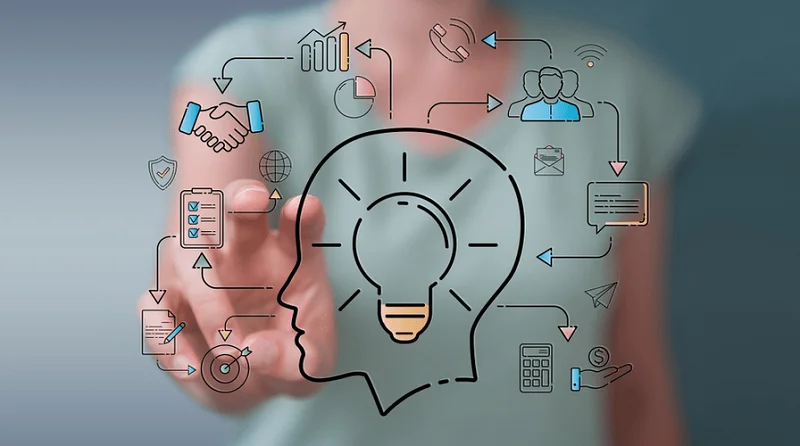One big disadvantage here is that it can eat up resources fast if left unchecked. For example, define a nomenclature for files or define a variable naming style such as camelCase. This will help your team to produce organized and consistent code that is easier to understand but also to test during the next phase. In other words, the team should determine the feasibility of the project and how they can implement the project successfully with the lowest risk in mind. This article will explain how SDLC works, dive deeper in each of the phases, and provide you with examples to get a better understanding of each phase.
- Difficult to define requirements at the beginning and difficult to change at a later stage.
- Each stage has a separate project plan and takes information from the previous stage to avoid similar issues (if encountered).
- Developers will follow any coding guidelines as defined by the organization and utilize different tools such as compilers, debuggers, and interpreters.
- Black-Box Testing – examines the functionality of an application without peering into its internal structures or workings.
- The difficulty of designing a system from the ground up is reduced by using a system development life cycle.
System development life cycles are typically used when developing IT projects. It’s advantageous for large projects since development teams can create very customized products and incorporate any received feedback relatively early in the life cycle. One of the upsides to this model is that developers can create a working version of the project relatively early in their development life cycle, so implement the changes are often less expensive. One of the fundamental aspects of business systems analysis is to consider the value and the efficiency of the systems within a company. This means it is important to evaluate the life cycle of the different systems in the business and analyse whether the systems are worthwhile implementing. Before any of the stages of SDLC are run in a company, it is crucial to first evaluate the benefits of the system.
A Better Way to Manage System and Software Development Life Cycles
These processes have some similar characteristics but also possess certain subtle differences among themselves. After the development of the product, testing of the software is necessary to ensure its smooth execution. Therefore, at this stage, all the probable flaws are tracked, fixed, and retested. The biggest difference between the lean methodology and the other methodologies is that the system’s full set of requirements is unknown when the project is launched. As each iteration of the project is released, the statistics and feedback gathered are used to determine the requirements.
Each project has its own level of complexity in planning and execution, and often within an organization, project managers employ numerous SDLC methods. Even when an enterprise utilizes the same methods, different project tools and techniques can differ dramatically. The SDLC framework exists to help businesses reduce time to market, deliver better performance, save money, and increase the potential value of their product.
Waterfall Model System Development Life Cycle
Once the requirement is understood, the SRS (Software Requirement Specification) document is created. The developers should thoroughly follow this document and also should be reviewed by the customer for future reference. Furthermore, by considering the costs, benefits, time, and resources, a company finds phases of the systems development life cycle out about the scope of the problem as well as determines the solutions in this phase of SDLC. The SDLC approach is used so that each and every user can understand what activities are involved in each step and also that these steps can be repeated and reworked when needing to change or improve the system.
Fabricator: End-to-End Declarative Feature Engineering Platform – InfoQ.com
Fabricator: End-to-End Declarative Feature Engineering Platform.
Posted: Tue, 10 Oct 2023 16:42:35 GMT [source]
The WBS and all programmatic material should be kept in the “project description” section of the project notebook.[clarification needed] The project manager chooses a WBS format that best describes the project. At this step, desired features and operations are detailed, including screen layouts, business rules, process diagrams, pseudocode, and other deliverables. It’s critical to follow the seven phases of the System Development Life Cycle whenever you’re working on a new product. Developers have a clear understanding of the objectives they must achieve and the deliverables they must complete within a certain time frame, reducing the risk of wasting time and money.
V-Shaped Model
This may involve training users, deploying hardware, and loading information from the prior system. Conduct with a preliminary analysis, consider alternative solutions, estimate costs and benefits, and submit a preliminary plan with recommendations. Systems Development Life Cycle is a systematic approach which explicitly breaks down the work into phases that are required to implement either new or modified Information System. Again, because SDLCs rely heavily on documentation and guidelines, it’s a team effort, and losing even a key person won’t put the project’s deadline in jeopardy.

By integrating security measures throughout the software development lifecycle, SDLC models ensure that applications are both functional and fortified against potential threats. These models provide a structured approach to software development, https://www.globalcloudteam.com/ ensuring that each stage of the process is meticulously executed. Another significant benefit of using a system development life cycle is the ability to plan ahead of time and assess the organized phases and goals of a software system project.
Conclusion: 7 Stages of System development life Cycle
This approach also ensures that the provider can constantly measure itself to interpret the requirements of – and deliver the best solution to – the client. The tools that this methodology prescribes should have built-in quality and project control measures, ensuring that a certain quality level is maintained. These properties enhance the management of time and specifications of the project. The systems development life cycle (SDLC, also called the software development life cycle or simply the system life cycle) is a system development model.

All of the preliminary planning and outlining should, in principle, make the actual development step pretty simple. Phase 3 of the systems development life cycle describes the desired features and operations of the system. The objective of the systems design phase is to transform all requirements into detailed specifications covering all aspects of the system. Finally, approval to progress to the development phase must be granted to complete the systems design phase. The most important thing is that SDLC provides overall control of the system development process from planning to maintenance stages. System development life cycle ensure that the new system meets the end user requirements and system is free from bugs and errors.
How to become a software developer
The project’s specifications and intended results significantly influence which model to use. For example, the waterfall model works best for projects where your team has no or limited access to customers to provide constant feedback. However, the Agile model’s flexibility is preferred for complex projects with constantly changing requirements. It then creates the software through the stages of analysis, planning, design, development, testing, and deployment. By anticipating costly mistakes like failing to ask the end-user or client for feedback, SLDC can eliminate redundant rework and after-the-fact fixes.

The project manager is the overall control agent for a strong SDLC process. However, unlike traditional software development that addresses security as a separate stage, SDLC addresses security every step of the way through DevSecOps practices. ” This phase of the SDLC starts by turning the software specifications into a design plan called the Design Specification. All stakeholders then review this plan and offer feedback and suggestions. It’s crucial to have a plan for collecting and incorporating stakeholder input into this document. Failure at this stage will almost certainly result in cost overruns at best and the total collapse of the project at worst.
Benefits of the SDLC
The development team must determine a suitable life cycle model for a particular plan and then observe to it. CASE (Computer Aided Systems/Software Engineering) – organizes and controls the development of software or systems through use of a computer-assisted method. Using CASE allows everyone to share a common view of the project and where it stands at each stage of development.


